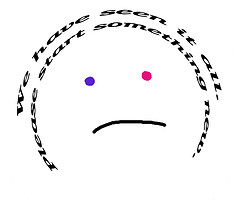|
|
|
Saturday, October 27th, 2012
 In 1914 why did that ultimate capitalist Henry Ford raise worker pay to the unheard-of wage of $5 a day? There is many a corporate titan who would do well to consider Ford’s philosophy today—before developing next year’s executive compensation plan or even deciding on this year’s bonuses. In 1914 why did that ultimate capitalist Henry Ford raise worker pay to the unheard-of wage of $5 a day? There is many a corporate titan who would do well to consider Ford’s philosophy today—before developing next year’s executive compensation plan or even deciding on this year’s bonuses.
Not only was it a matter of social justice, Ford wrote, but paying high wages was also smart business. When wages are low, uncertainty dogs the marketplace and growth is weak. But when pay is high and steady, Ford asserted, business is more secure because workers earn enough to become good customers. They can afford to buy Model Ts.
These days, innovation is touted as the world’s savior, but is it really the game-changers or their copycats that provide real economic benefit? An excerpt from The Art of Being Unreasonable: Lessons in Unconventional Thinking, by Eli Broad posits the latter. And before you argue keep in mind that Apple didn’t invent computers or MP3 music players.
Who does capture the benefits of new ideas, products, and models? Imitators. They get a free ride, avoid dead ends, capitalize on the shortcomings of early offerings or tweak the originals to better fit shifting consumer tastes. And yet, imitators rarely get the recognition they deserve: When was the last time someone received an Imitator of the Year Award?
Based on descriptions of the new Windows 8 operating system I’ve decided that I will switch a few weeks after I die. If all you use is a smartphone or tablet you’ll probably have more tolerance to it, but if you use multiple applications on a real computer not so much. HBS’ Rosabeth Moss Kanter discusses it in terms of people’s resistance to change and I agree, but I have a much stronger resistance to things that make me feel incompetent and/or stupid.
Technology is good at that and as one commenter said, “I can’t tell you how many times I’ve sat there getting angry trying to figure out how to get something done. I’m not an idiot when it comes to computers, but this OS made me feel like one.” Kanter’s response? “Your software should not make anyone feel like an idiot.”
Common wisdom says “if it isn’t broke don’t fix it,” but there are times when that attitude is shortsighted. The Smithsonian certainly isn’t broke in any way, shape or form, but it has looked to the future and decided it needs to update its brand if it plans to continue for another 166 years and beyond.
Although the Smithsonian, the world’s largest museum and research complex, is already a popular and trusted brand, officials there nonetheless decided they needed to raise awareness, particularly among young people, of precisely what they have to offer.
Flickr image credit: pedroelcarvalho
Posted in Expand Your Mind | No Comments »
Wednesday, September 12th, 2012
While looking for something in my old posts I came across this one and decided it was a good time to post it again.
Choose the Freedom to Change
“The past is the present, isn’t it? It’s the future, too.”
–Long Day’s Journey Into Night, Eugene O’Neill
I recently ran across this quote; it’s been years since I read the play, but that poignant line, with its message that what has been is and irrevocably will be has always left me feeling depressed and angry.
Depressed because it revokes hope.
Angry because it’s the antithesis of everything I believe.
It proclaims that we, whether individuals, organizations or countries, can’t change; that we are locked on our trajectory with no rudder and an endless supply of fuel.
 That thought represents a type of MAP (mindset, attitude, philosophy™) I’ve constantly rejected, while embracing the belief that anyone can change if they choose to make the effort. That thought represents a type of MAP (mindset, attitude, philosophy™) I’ve constantly rejected, while embracing the belief that anyone can change if they choose to make the effort.
Not that it’s simple or that it’s easy, but that it can be done.
I’ve done it and am in the process of doing it again.
You’ve done it and can choose to do it again.
Whether you choose an opportunity or pass it by, each one changes the present and alters the future, because your MAP changes with each decision.
Not necessarily large changes, but changes none the less and those changes will impact your next decision and so on throughout life.
You can avoid changes by embracing a rigid ideology that eliminates decisions by turning a blind eye of all divergent opportunities or by allowing someone else to decide for you in the name of followership.
What will you choose to do?
Flickr image credit: David Reece
Posted in Change, Personal Growth | No Comments »
Sunday, January 1st, 2012
 Today is the first day of the rest of MAPping Company Success’s life and there are changes for 2012, some of which involve you. Today is the first day of the rest of MAPping Company Success’s life and there are changes for 2012, some of which involve you.
As most of you know Jim Gordon simultaneously got married and retired from drawing mY generation. I have two excellent Creative Commons sources from which to draw comic commentary, however, I would much rather invite one of you.
If you feel an affinity to drawing a comic based on your experiences in the workplace please call 360.335.8054 or write me. And remember, it’s more about your sense of humor, irony and irreverence than your drawing skill!
I’m also looking for guests who want to share their own experiences in areas of interest to my readers. These include culture, management, motivation, people acquisition and retention and startups in all their gory glory. Whether you are a boss (at any level), a worker or a founder and you have an interesting story, lesson learned or anything else to share please contact me.
Readers seem to have a preference for shorter posts, 300 to 500 words or less; what I’m not interested in are thinly veiled promotional posts, whether for products or services, although I will include links in your (brief) bio.
Wordless Wednesday is history, although Miki’s Rules to Live By will randomly continue as before. If you have a great rule of your own please send them to me, I am always looking for additional useful, pithy and/or irreverent rules to live by.
Also, don’t hesitate to share any suggestions you have for making MAPping Company Success more relevant and useful.
Personally, I’m looking forward to more input, commentary and interaction with my readers.
I hope you had a great holiday and accept my wishes for a happy, healthy, wealthy and successful 2012.
Flickr image credit: erix!
Posted in Innovation | No Comments »
Sunday, November 6th, 2011
 Why in the world would I choose a poet who’s life barely reached into the Twentieth Century (1850-1919 to provide insight to both workers and mangers? Because real wisdom is ageless, what changes are the words and style used to communicate it. Why in the world would I choose a poet who’s life barely reached into the Twentieth Century (1850-1919 to provide insight to both workers and mangers? Because real wisdom is ageless, what changes are the words and style used to communicate it.
You’re already familiar with Wilcox through paraphrasing of some of her work; for example, “Laugh and the world laughs with you; Weep, and you weep alone; For the sad old earth must borrow its mirth, But has trouble enough of its own”
Life is full of choices and the way we choose is dictated by our MAP, or as Wilcox said, “’Tis the set of the sail that decides the goal, and not the storm of life”
I’m a big proponent of deep thinking, something that can’t happen when you are wired and connected. Wilcox made this point beautifully in this short rhyme.
“When the great universe was wrought
To might and majesty from naught,
The all creative force was –
THOUGHT.”
Thinking goes hand in hand with learning and then sharing what is learned with others. The problem is that some people want to share first and these words seem written especially for them,
“Live to learn, and learn to live
If you want to give men knowledge
You must get, ere you give.”
Here’s some great advice for managers, “A pat on the back is only a few vertebrae removed from a kick in the pants, but is miles ahead in results.”
Finally, here are six words that can serve as a foundation for both entrepreneurs and companies working to create a culture of innovation, “Change is the watchword of progression”
Flickr image credit: WikiMedia Commons
Posted in Quotable Quotes | No Comments »
Monday, October 10th, 2011
The thing she [behavioral psychologist] taught me—and this sounds obvious—is that behavior is a function of consequence. We had to change the behavior in the organization so that people felt safe to bring bad news. And I looked in the mirror, and I realized I was part of the problem. I didn’t want to hear the bad news, either. So I had to change how I behaved, and start to thank people for bringing me bad news. —Joseph Jimenez, chief executive of Novartis
The behavioral psychologist was brought in after a consulting group was paid to provide “better, more robust process, with more analytics,” which changed nothing.
When we started RampUp Solutions in 1999, we spent a good deal of effort coming up with a tag line that easily explained the services we provide.
After several iterations we finally settled on “To change what they do change how you think”
Over the years, I’ve heard and read story after story of how all kinds of changes—from turn arounds to improved productivity to retention—all started with a change in the way the boss thought.
And that applied whether the boss was CEO, team leader or somewhere in-between.
Stories and discussions about change tend to focus on the actions that bring about the changes, instead of starting at the beginning with the hardest work,
Work that requires the boss, at whatever level, changing the way she thinks and then dispersing and embedding those changes throughout her organization.
So before you hire expensive consultants or seek help from advisors look in the mirror to determine how much of the problem is you.
Flickr image credit: manymeez
Posted in Business info, Leadership, Personal Growth | 4 Comments »
Monday, August 29th, 2011

I read an interesting article from a Forbes advisor called A Young World is No Place for Old Corporations; in a nutshell it talks about nostalgia for “what the WSJ calls America’s ‘Midcentury Moment’, those post war “golden years of the 1940’s, ‘50s and early ‘60s?” The boom years when Americans forged the world’s new super power, as those in Europe diminished.“
It goes on to say, “During this time US companies became dominant corporations on a world stage, strongly influencing how business was conducted all over the world.
Fast forward to 2011, America now competes in a fierce global market against young and dynamic economies.”
It lauds the dynamic spark that drove the US economy; a common theme, but one I get tired of seeing.
Tired because it only tells only the upside of the story and ignores so much.
I am neither an economist nor an historian, but here is my view of the same history.
- European industry didn’t diminish, it was crippled by WWII.
- The US became dominant because we were the only country in a position to produce as opposed to spending our efforts and money to rebuild.
In other words, in comparison to the material and psychological devastation experienced by the rest of the world what the US suffered was more like a serious inconvenience.
But not too inconvenient, since we kept on producing and selling.
War’s end left us in the cat-bird seat—not rebuilding, just retooling to sell what the rest of the world needed to rebuild.
A lack of competition breeds arrogance, sloppy practices and fat—fat management and fat labor; it is easy to succeed in a world with little-to-no competition.
When countries no longer needed us because they produced their own we were surprised; when they went beyond and more efficiently produced what we produced and innovated where we had not bothered we were shocked.
When comfortable, we humans seem to believe that some version of what is will always be; it isn’t that we don’t believe in change, but we seem blind to radical change.
We are taken by surprise when it happens and long instead for whatever version of the “good old days” brings us back to our (false) comfort zone.
Flickr image credit: Bruce Turner
Posted in Business info, Change, Innovation | No Comments »
Thursday, May 5th, 2011
 A few weeks ago I was talking to “Carl,” an entrepreneur, about the problems he was having launching his product. A few weeks ago I was talking to “Carl,” an entrepreneur, about the problems he was having launching his product.
Based on feedback from his market I suggested that he needed to change some parts of his customer service. Carl rejected the idea of changing because the new approach wasn’t in his plan.
He called this week and said he was implementing what we talked about after hearing a discussion on the importance of knowing when to “pivot.”
“Pivoting” is the new term for a bit of wisdom that’s been around for more than the 30 years I’ve known it.
Pivoting refers to changing the plan, and usually the vision, of your company to reflect major changes in the market/economy or from customer feedback; Groupon is a good example.
Carl said he appreciated my help, but that he would have moved faster if I had explained that the customer feedback required him to pivot, instead of saying that he should change the plan.
I replied that he did change the plan, but Carl insisted he didn’t change it, he pivoted and that was different.
And before you condemn Carl as an idiot, please note that over the years I’ve had hundreds of similar conversations with all kinds of people in various positions and at all levels.
The point is that terms change, so it’s important to listen to what’s being said — not just the words used, but the meaning of those words.
Image credit
Posted in Communication, Entrepreneurs | 4 Comments »
Monday, March 14th, 2011
 There has been much written about implementing change in an organization. I’ve written several articles on change focusing on the need to change yourself before you can expect those around you to change and I stand by those. (Two of them are here and here.) There has been much written about implementing change in an organization. I’ve written several articles on change focusing on the need to change yourself before you can expect those around you to change and I stand by those. (Two of them are here and here.)
And as you know I often link to articles and offer my take on them. The trouble with that is that many of my time-pressed readers read what I wrote and promise themselves that they will read the link later, but never do. They either forget or the reminder gets buried under a never-ending avalanche of new stuff to read.
I think today’s link is important, so I’m not going to comment or offer a few quotes.
Since this post is only 188 words, you’ll have time to click and read That’s the Way We (Used to) Do Things Around Here: With a little knowledge of neuroscience, reframing behavior can be the essence of organizational change.
You also might want to consider signing up for strategy+business; you may not always agree with them, I don’t, but I believe you will find them useful.
stock.xchng image credit: http://www.sxc.hu/photo/880737
Posted in Change | No Comments »
Friday, January 14th, 2011
 Last week Craig, a senior manager I know, referred one of his direct reports to me. Last week Craig, a senior manager I know, referred one of his direct reports to me.
During the annual review Craig had warned “Jim” his department’s turnover was unacceptably high and that he was tying 15% of Jim’s annual bonus to his hitting the retention numbers they discussed and agreed upon during the meeting.
Jim asked Craig if the company would be willing to pay for a coach, because he was unsure exactly how to improve retention and hadn’t found books on the subject of much use.
Craig said the company wouldn’t, but he knew someone affordable and called me.
I agreed to have an exploratory conversation to be sure that we could work together and that I could help.
When I talked with Jim he said he believed that in order to do what Craig wants he needed to “get rid of more dead wood and bring on people who will jump on his ideas, aren’t afraid of hard work and understand loyalty.”
However, doing so would preclude any chance of his meeting the retention numbers, especially since, based on past experience, he would be forced to turn several of the new hires, too.
After hearing a good deal more about what he had tried that didn’t work, I explained how I work, costs, etc.,
I warned him that I’m pretty blunt and suggested he check out this blog for a window on how I think and my approaches and that we both think about it to decide whether we could create a productive relationship that would achieve what he wanted.
Jim called yesterday and the upshot is we will be working together to solve his retention problems and I have his permission to share parts of that with you over the next few months.
It should be interesting.
Flickr image credit: http://www.flickr.com/photos/saxonmoseley/224426426/
Posted in Personal Growth, Retention | No Comments »
Friday, December 31st, 2010
 Earlier this week I mentioned that changes were coming to MAPping Company Success. Earlier this week I mentioned that changes were coming to MAPping Company Success.
The main reason for the changes is I’m bored and if I’m bored I’m sure to bore you. Additionally, with the release of Option Sanity™ I’m more involved with startups and entrepreneurial issues (meaning startups that are focused on becoming sizable enterprises as opposed to small biz or home-based biz).
However, my focus on MAP (mindset, attitude, philosophy™) and its effect on company culture, management, retention and motivation is applicable to anyone, whether in a startup, self-employed or working for a larger organization.
There are some specific changes coming.
Wordless Wednesday will focus more on applicable or interesting videos (you have no idea how difficult it is to find good subjects for WW).
As I mentioned yesterday, Leadership’s Future will be come an occasional feature on a different day and Thursday’s focus will be on the stories of specific entrepreneurs.
Sunday’s Quotable Quotes will occasionally share its day with a new feature focused on odd facts and stats.
Tuesday’s Ducks in a Row, about culture, and Saturday’s Expand Your Mind, with links to articles of interest continue.
Another change is to invite guest posts from you, my friends and readers. 500 words or less on a topic of your choice, as long as it is relevant to the broad focus of MAPping Company Success and you believe it would be of interest to others.
Of course, none of this is carved in stone, so I would love to hear additional suggestions from you.
Last, but certainly not least…
HAPPY NEW YEAR
I wish you and yours a healthy, happy, adventurous, exciting and successful 2011!
Flickr image credit: http://www.flickr.com/photos/ikrichter/4813677392/
Posted in Innovation, Personal Growth | 4 Comments »
|
 Subscribe to
Subscribe to
MAPping Company Success
About Miki 
Clarify your exec summary, website, etc.
Have a quick question or just want to chat? Feel free to write or call me at 360.335.8054
The 12 Ingredients of a Fillable Req
CheatSheet for InterviewERS
CheatSheet for InterviewEEs™
Give your mind a rest. Here are 4 quick ways to get rid of kinks, break a logjam or juice your creativity!
Creative mousing
Bubblewrap!
Animal innovation
Brain teaser
The latest disaster is here at home; donate to the East Coast recovery efforts now!
Text REDCROSS to 90999 to make a $10 donation or call 00.733.2767. $10 really really does make a difference and you'll never miss it.
And always donate what you can whenever you can
The following accept cash and in-kind donations: Doctors Without Borders, UNICEF, Red Cross, World Food Program, Save the Children
*/
?>About Miki
About KG
Clarify your exec summary, website, marketing collateral, etc.
Have a question or just want to chat @ no cost? Feel free to write
Download useful assistance now.
Entrepreneurs face difficulties that are hard for most people to imagine, let alone understand. You can find anonymous help and connections that do understand at 7 cups of tea.
Crises never end.
$10 really does make a difference and you’ll never miss it,
while $10 a month has exponential power.
Always donate what you can whenever you can.
The following accept cash and in-kind donations:
|
 In 1914 why did that ultimate capitalist Henry Ford raise worker pay to the unheard-of wage of $5 a day? There is many a corporate titan who would do well to consider Ford’s philosophy today—before developing next year’s executive compensation plan or even deciding on this year’s bonuses.
In 1914 why did that ultimate capitalist Henry Ford raise worker pay to the unheard-of wage of $5 a day? There is many a corporate titan who would do well to consider Ford’s philosophy today—before developing next year’s executive compensation plan or even deciding on this year’s bonuses.



 That thought represents a type of
That thought represents a type of  Today is the first day of the rest of MAPping Company Success’s life and there are changes for 2012, some of which involve you.
Today is the first day of the rest of MAPping Company Success’s life and there are changes for 2012, some of which involve you. Why in the world would I choose a poet who’s life barely reached into the Twentieth Century (1850-1919 to provide insight to both workers and mangers? Because real wisdom is ageless, what changes are the words and style used to communicate it.
Why in the world would I choose a poet who’s life barely reached into the Twentieth Century (1850-1919 to provide insight to both workers and mangers? Because real wisdom is ageless, what changes are the words and style used to communicate it.

 A few weeks ago I was talking to “Carl,” an entrepreneur, about the problems he was having launching his product.
A few weeks ago I was talking to “Carl,” an entrepreneur, about the problems he was having launching his product. There has been much written about implementing change in an organization. I’ve written several articles on change focusing on the need to change yourself before you can expect those around you to change and I stand by those. (Two of them are
There has been much written about implementing change in an organization. I’ve written several articles on change focusing on the need to change yourself before you can expect those around you to change and I stand by those. (Two of them are  Last week Craig, a senior manager I know, referred one of his direct reports to me.
Last week Craig, a senior manager I know, referred one of his direct reports to me.

